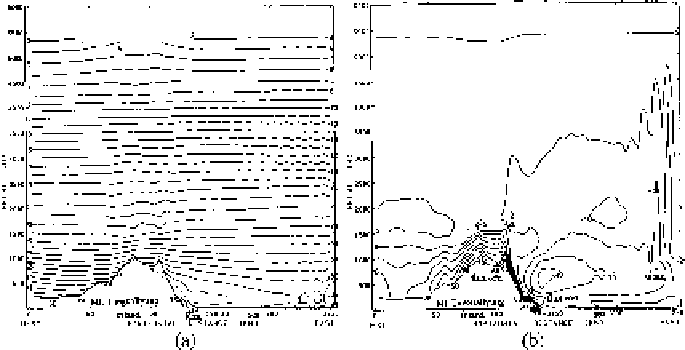Geoscience Reference
In-Depth Information
Fig. 2. (a) As shown in Fig. 1(c), except for air temperature (
◦
C) and sensible heat
flux (W/m
2
).
In Fig. 2(a), maximum air temperature is found near the bottom of
the eastern slope, because strong daytime thermal heating at the ground
surface on the mountain slope can produce a very high air temperature and
westerly downslope wind may make, in part, a contribution to the increase
of air temperature due to adiabatic heating processing from compression of
air by wind, which exact amount of adiabatic heating rate has not presently
been known in literatures.
In Fig. 2(b), sensible heat fluxes from the surface of the mountain top to
the upper level are in a range of 60 to
20 W/m
2
and those from the inland
coast to the upper level are also from 50 to
−
40 W/m
2
, showing flux conver-
gence. On the other hand, the fluxes from the coastal and open sea surfaces
to the upper levels are from
−
40 W/m
2
.
As sensible heat fluxes are much greater at both the top of the mountain
and inland coast than in the upper level or slightly greater at the sea sur-
face, flux convergences toward the upper level could cause these surfaces to
be warmed up. Since sensible heat flux convergence at the mountain top is
stronger than over the coastal sea, accumulated sensible heat flux should
be transported into the coast and results in maximum air temperature just
on the coastal inland surface, especially at the point of maximum sensible
heat flux convergence. The transportation of accumulated sensible heat flux
follows the return flow in the upper level over the coastal sea, which has
two atmospheric circulations, such as small circulation in the coastal sea
and big one in the open sea.
40 W/m
2
and from
−
20 to
−
−
10 to
−









